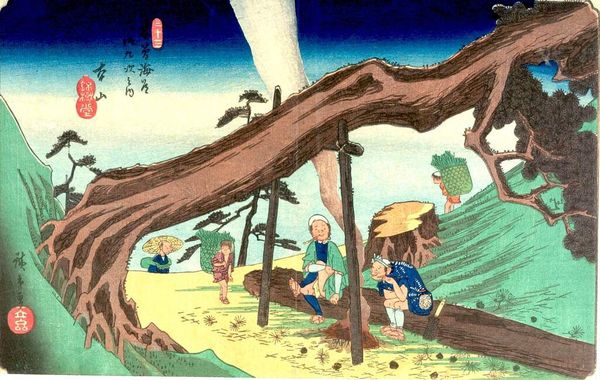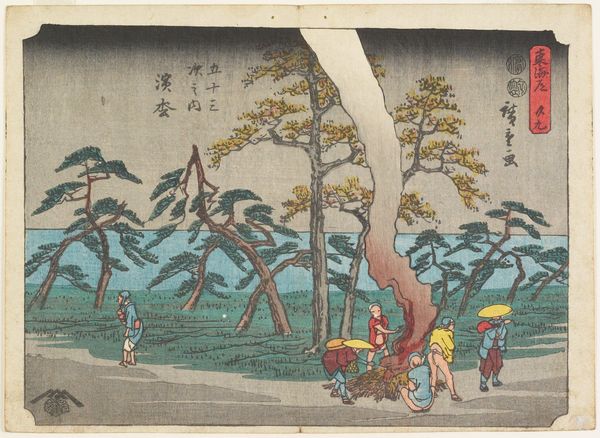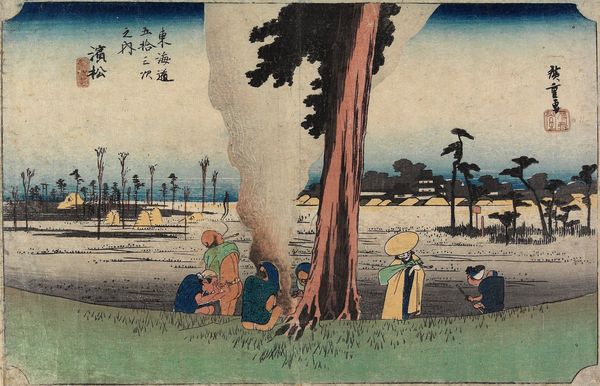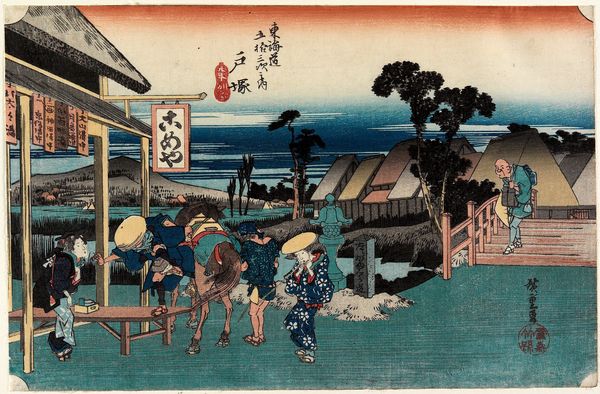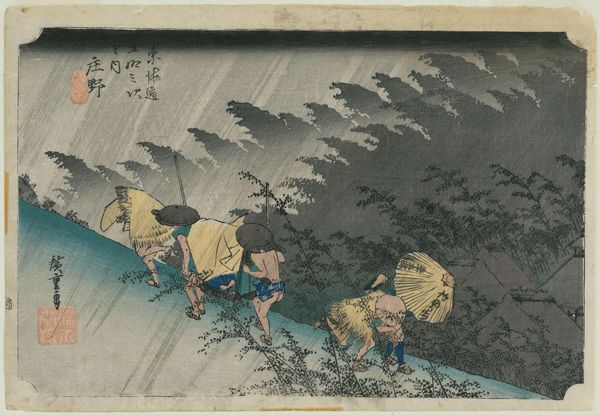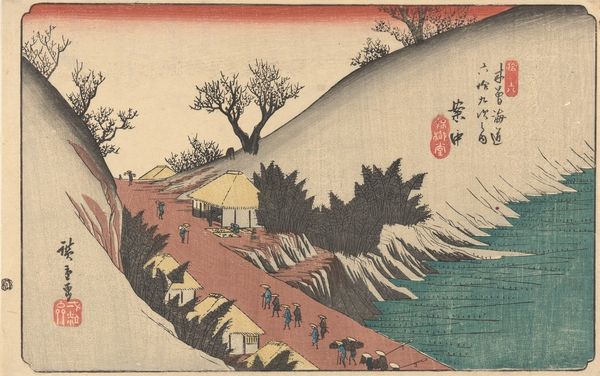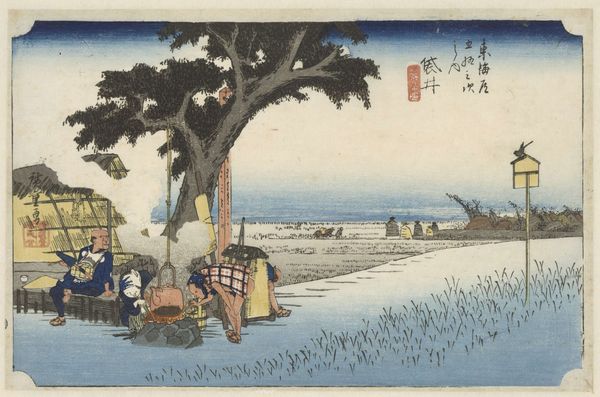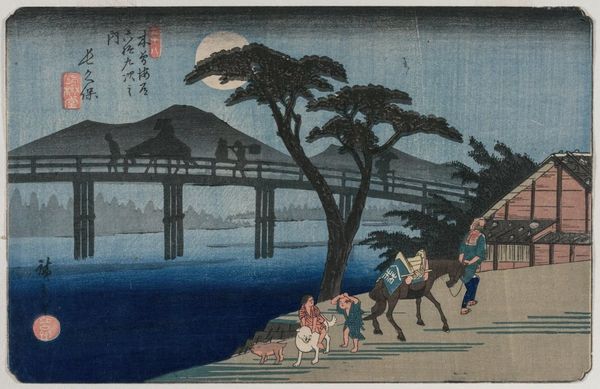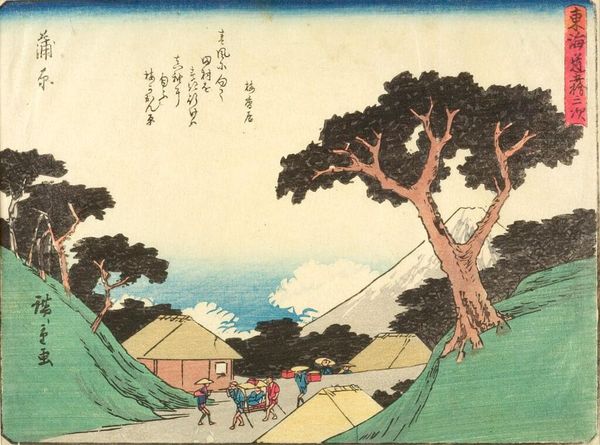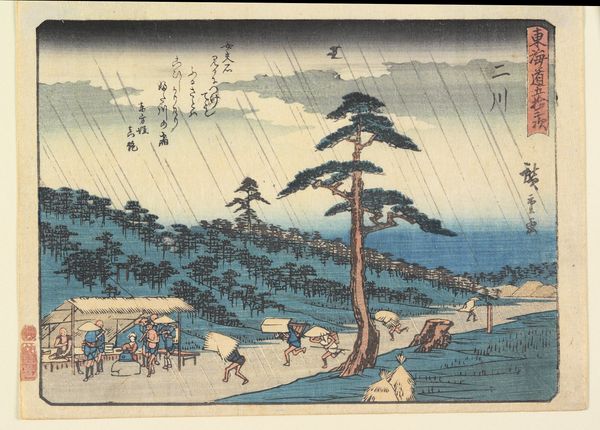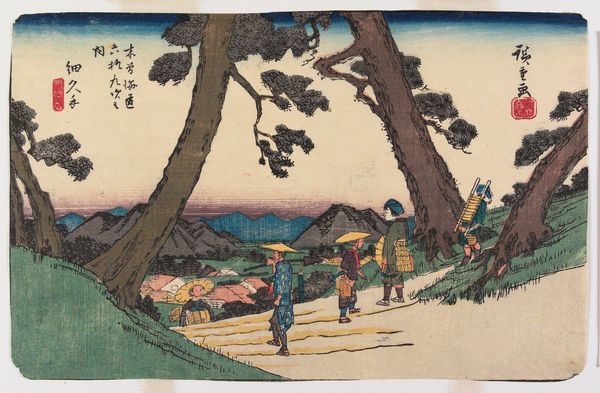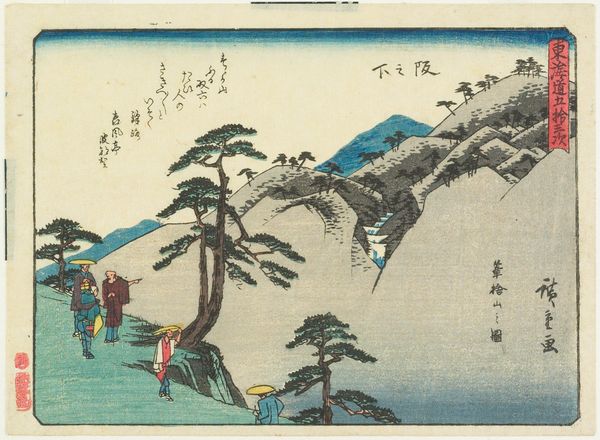
Dimensions: height 224 mm, width 352 mm
Copyright: Rijks Museum: Open Domain
Editor: So, this is "Motoyama" by Utagawa Hiroshige I, a woodblock print dating from around 1835-1840. It strikes me as a really interesting slice-of-life scene. I'm curious, what do you see when you look at this piece? Curator: It's compelling, isn't it? Beyond the picturesque landscape, I see a visual narrative deeply rooted in the social realities of 19th-century Japan. These figures aren't just placed in the scenery, they're actively interacting with it. Consider their labor; the wood they carry, the act of resting. It suggests a direct relationship to resource extraction and its impact on communities. Editor: That makes sense. I hadn’t really thought about their work. How does the ukiyo-e style influence this perspective? Curator: Ukiyo-e, meaning "pictures of the floating world", often depicted the transient pleasures of urban life. But Hiroshige expands this. By including rural landscapes and working-class people, he acknowledges the broader social fabric. The serene composition almost disguises a quiet commentary on labor, class, and the environment, wouldn’t you agree? Editor: Absolutely. So it’s not just about a beautiful landscape, but also the people who shaped it and were shaped by it. Curator: Precisely. We can see an early intersectional viewpoint, in which social critique and art criticism come together, don't you think? He humanizes the mountain, as well as showing that mountains were crucial for natural resources for people to subsist on. Editor: I see what you mean. Looking at it again, it feels more complex, richer. It’s more than just a landscape; it’s a story. Curator: Exactly, and I think recognizing these layers deepens our understanding, hopefully paving the way to contemplate other artworks in different perspectives.
Comments
No comments
Be the first to comment and join the conversation on the ultimate creative platform.
